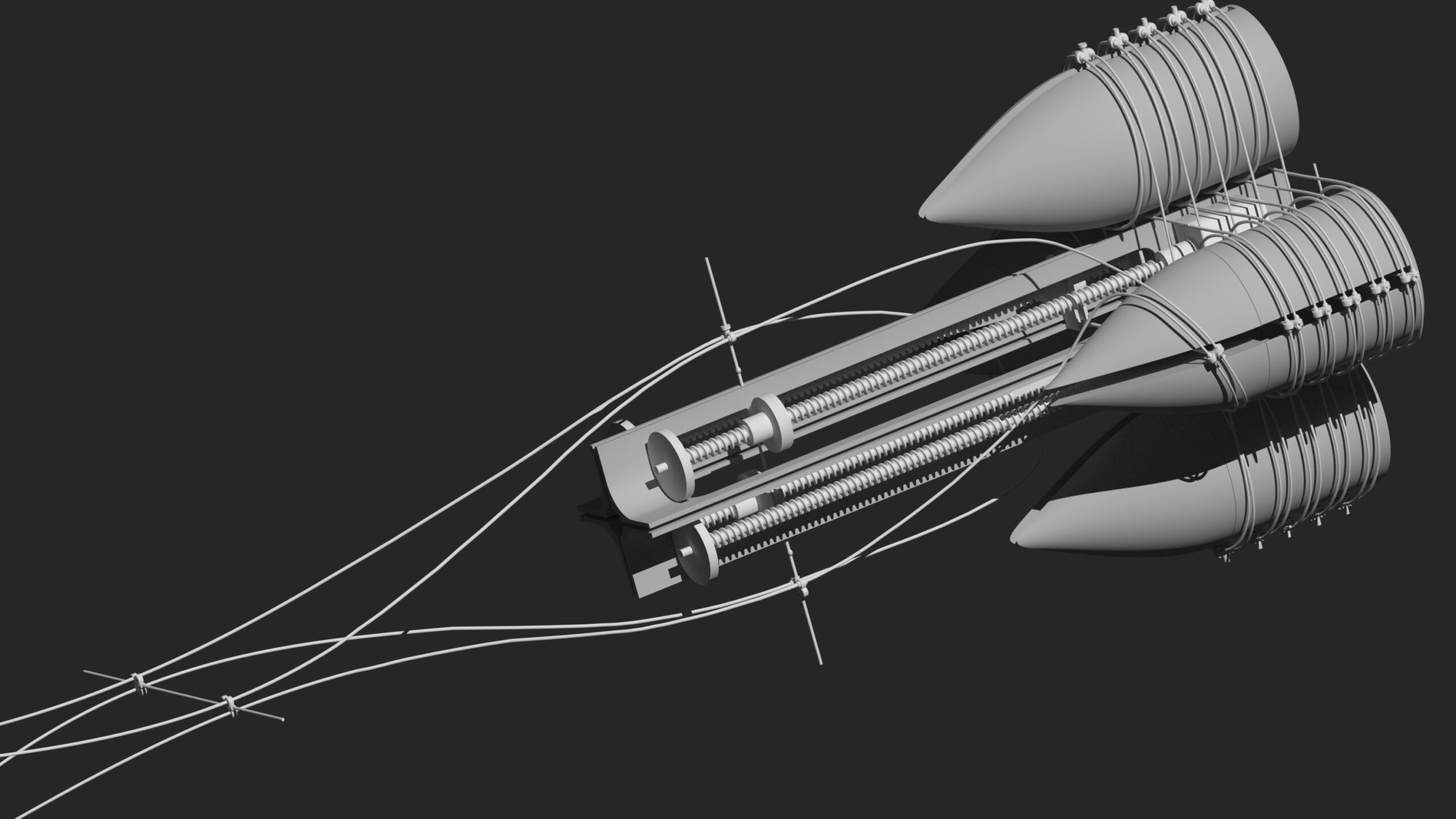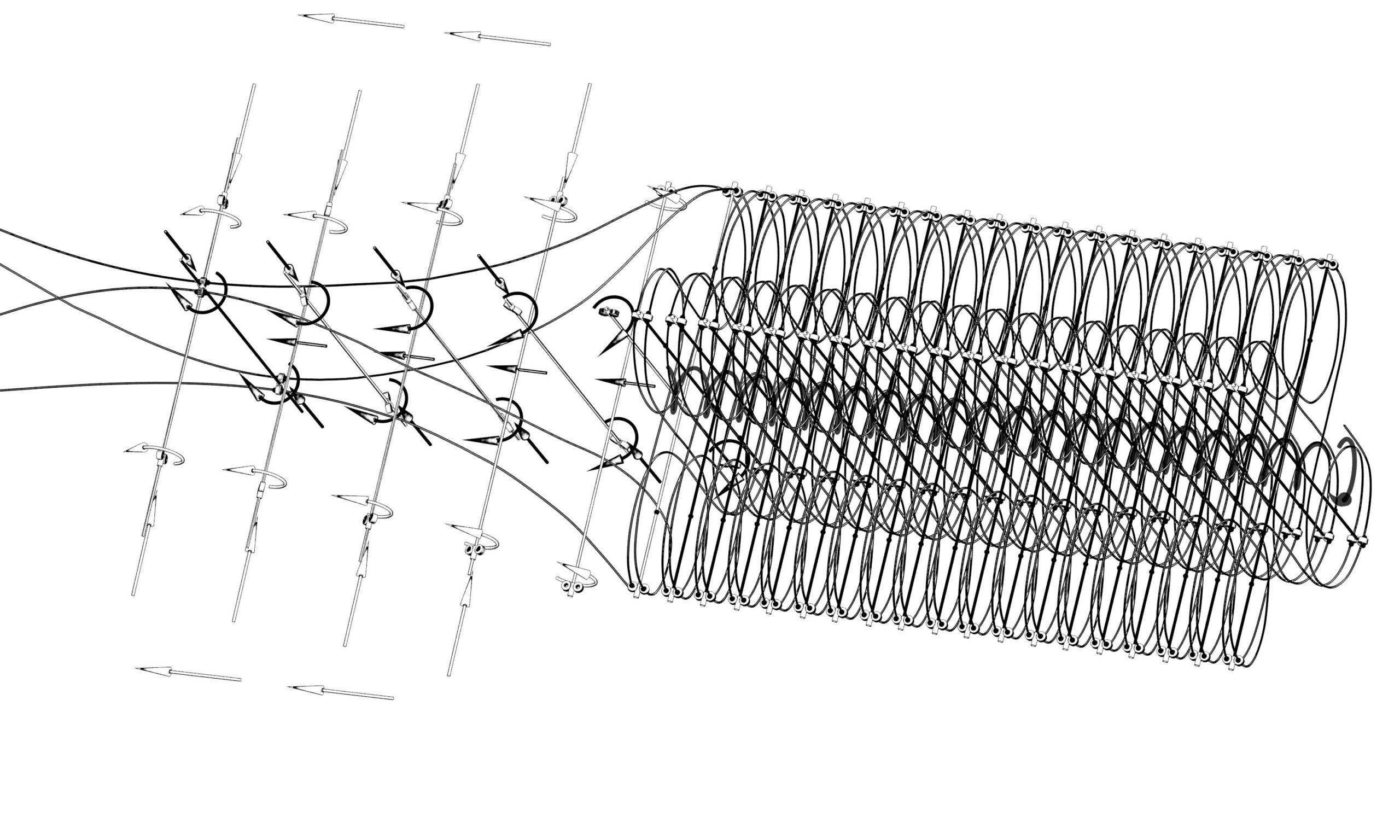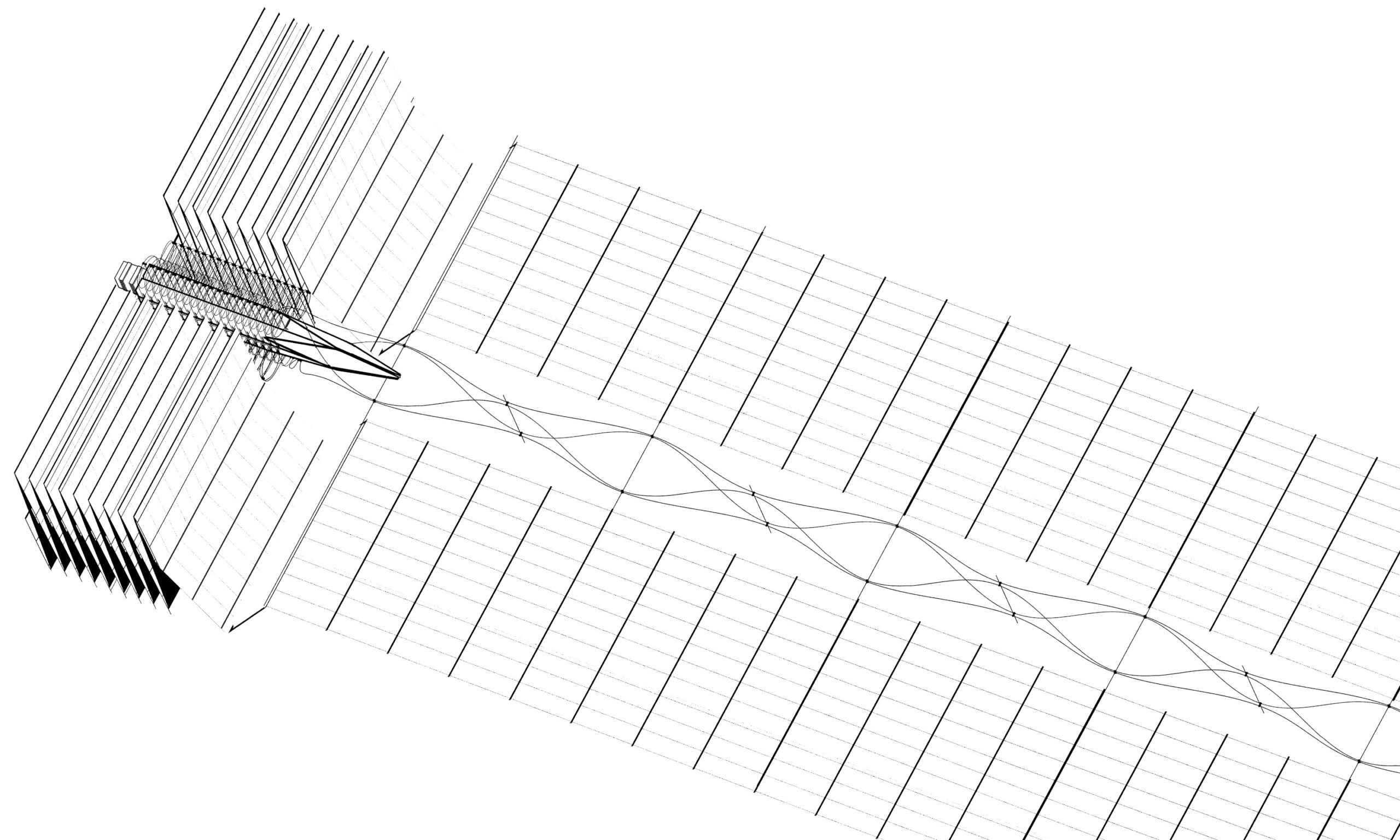wavetruss
deployable structures
A sequentially bistable deployable structure refers to a design where multiple bistable elements are arranged in a way that allows them to transition from one stable state to another in a controlled sequence, effectively causing the entire structure to unfold or deploy step-by-step, like a wave, rather than all at once; this is achieved by carefully designing the geometry of the bistable elements and their connections to propagate a “transition wave” through the structure, enabling controlled deployment with minimal external force required.
Pre-stressed structures having flexural properties may function as stand-alone structural components used to build systems for applications on earth and in space.
Pre-straining within the elastic deformation range can benefit materials by increasing their yield strength and fatigue resistance, essentially making them stronger and more resistant to deformation under repeated loading cycles, while still maintaining their ability to return to their original shape when the load is removed (elastic behavior) due to the introduction of internal stresses from the pre-strain process.
WHY WAVETRUSS
Internal strain energy in a structure provides a key benefit by allowing the structure to absorb and redistribute applied loads without immediate failure, essentially acting as a “buffer” against deformation, which is particularly important in situations where sudden or fluctuating forces are present; this is especially crucial for maintaining structural integrity and preventing damage in dynamic environments.
Flexure structures composed of elastically deformed parts and stored elastic potential energy may be well adapted to perform in reduced gravity environments.
Sinusoidal flexures built from elastic materials store potential energy that is continuous throughout the structure. The structure’s spatial frequency and ability to reversibly store elastic potential energy enhance its ability to self-damp and controllably buckle. The flexure’s stored energy also enhances its flexural strength and damage tolerance.
Methods of deploying sinusoidal flexures are diverse. A flexure to be passively self-deployed is stowed in a high energy stable configuration consisting of a series of bi-stable regions that can be deployed sequentially or incrementally. A residual amount of elastic potential energy remains within the structure post deployment. Active deployment/assembly methods build sinusoidal flexures from individual parts or by elastically deforming relaxed preassembled structures.
The flexures can be optimized to satisfy applications that include the support and deployment of notional payloads in space. Deployable periodic bi-stable structures would be particularly well adapted to the unfolding materials for deployment. Applications that require a structure’s deployment to follow a predetermined or actively controlled trajectory are possible. Flexures may also aid in the rigidization of inflatable structures.
Methods of pre-stressing material members and assemblies to enhance their performance have been applied for thousands of years. Material pre-stressing has been used in ways of trial and error long before the mathematical tools of structural engineering were developed. Pre-stressing has been seen as an unconventional solution to problems encountered during an engineering design project. The development of new materials and simulation methods may change that conception.
Current building systems and methods may not be capable of efficiently applying the physical, engineering and mechanical properties of the exotic materials being formulated and adapted by material science. Advances in material science will expand the engineering environment and spur the development of novel systems that optimally use a new material’s extraordinary properties. Systems and methods according to these Wavetruss structures use high performance materials efficiently by uniquely pre-stressing them into energy rich sinusoidal shaped flexural members to form assemblies.
Conventional methods of construction result in structures that are not engineered to be rigid and also flexible. Common methods of construction build assemblies from structural members that are not pre-stressed through elastic deformation and are not flexural members. Most structures are composed of elements designed to experience axial compression or tension along their lengths. These conventional structures are more likely to experience uncontrolled elastic instability and failure when external forces result in their material deformation. A structure built from pre-stressed sinusoidal shaped members may be well adapted to exploit the elastic instability of its slender members by allowing their controlled deformation and possible buckling. The complex forces experienced by a flexural element can be seen as tools rather than obstacles. Efficiently building structures in space will require engineering solutions specific to the environment of space.
A pre-stressed sinusoidal lattice of length is an exemplary flexural beam and illustrative of the principles of a sinusoidal assembly. The organization and density of the flexural regions within a beam can give it varying degrees of flexural strength and specific anisotropic properties. Applications could include pre-stressed assemblies used to reinforce, or pre-stressed concrete and cellular foams, stand-alone structures and superstructure applications, aerospace design flexures and aero-structures.
The incremental nature of a sinusoidal structure’s deployment may be well adapted to assist in the unfolding of thin film and light weight solar systems. Packing and rigidization methods used by deployable and inflatable structures may be enhanced by incorporating elements of a deployable sinusoidal system. Elastic potential energy stored in the pre- and post-deployed structure could function to stiffen inflatables and expedite a system’s deployment process.
Sinusoidal structures can be engineered to deploy along a specific trajectory that is based on the unique wave properties of individual sinusoidal members making up an assembly.
The difficulty modeling and simulating the behavior of a complex structure having flexural properties may be lessened by the characteristics of a sinusoidal structure. Because individual flexure elements/flexures are organized sequentially and contiguously along a sinusoidal shaped member, each flexure within the assembly may be treated as a fixed beam.
Deployment and Assembly
The assembly/deployment process outputs and elastically deforms material to form flexural members having a sinusoidal shape and stored potential energy. The sinusoidal shaped members are oriented and deployed with support members as the structure takes shape.

Mechanical systems and devices guide, stress and assemble composite material members to deploy/extrude as pre-stressed structures. Sinusoidal shaped members are formed from a series of contiguous flexures; each flexure’s properties may be simulated using the pseudo-rigid body model or equivalent method. Each flexure is formed from a region of a sinusoidal member’s length that begins and ends at antinodes. During assembly, support members are positioned at antinodes maintaining the flexures’ shapes and the assembly’s pre-stressed state. By controlling the forces applied to and position of each flexure formed during the structure’s assembly, the distribution of potential energy within the assembly and its secondary shape can be programmed.

Packing and organizing material to be deployed by twisting and snap-buckling it to form a series of loops under mechanical stress may be an efficient method used to stow and deploy relaxed material as an elastic potential energy rich sinusoidal member.
Elastic members organized and held in a parts feeder, under stress may be controllably released and shaped into a sinusoid by peripheral guides and mechanisms. There is a point in the deployment process where the elastic member transitions from the shape held in the feeder to a sinusoidal shape. At this transition point or region, the member can be considered relaxed, in the sense that it is being reshaped/transitioned and in an intermediate/relaxed state.

Concerns related to the longevity of pre-stressed structures formed from elastic materials due to stress relaxation and creep will not dissuade their future use. Given the trajectory of nano-composite material development, flexural pre-stressing will increasingly be explored as a method of reliably enhancing the overall performance of a dynamic structure.
The incremental nature of the sinusoidal structure’s deployment (i.e. unbuckling λ/2 or 1λ at a time) may be advantageous when integrated “folded” materials like thin films or lightweight solar cells are to be simultaneously unfurled and deployed.